 Weird Stuff
Weird Stuff  Weird Stuff
Weird Stuff  Mysteries
Mysteries 10 Tragic Disappearances and Deaths in Joshua Tree National Park
 History
History 10 Ways Childhood Really Sucked in the Old West
 Music
Music 10 Name Origins of Famous Bands from the 1990s
 Religion
Religion 10 Biggest Turnarounds by the Catholic Church
 Weird Stuff
Weird Stuff 10 Unbelievable Times Laws Had Unintended Consequences
 Humans
Humans Ten Historic Women Who Deserve Way More Credit Than They Got
 Movies and TV
Movies and TV 10 Films That Spawned Major Lawsuits
 History
History Ten Times Towns Were Wiped Off the Face of the Earth
 Creepy
Creepy 10 of the Most Disturbingly Haunted Public Houses in the UK
 Weird Stuff
Weird Stuff 10 Niche Subcultures That Are More Popular Than You Might Think
 Mysteries
Mysteries 10 Tragic Disappearances and Deaths in Joshua Tree National Park
 History
History 10 Ways Childhood Really Sucked in the Old West
Who's Behind Listverse?

Jamie Frater
Head Editor
Jamie founded Listverse due to an insatiable desire to share fascinating, obscure, and bizarre facts. He has been a guest speaker on numerous national radio and television stations and is a five time published author.
More About Us Music
Music 10 Name Origins of Famous Bands from the 1990s
 Religion
Religion 10 Biggest Turnarounds by the Catholic Church
 Weird Stuff
Weird Stuff 10 Unbelievable Times Laws Had Unintended Consequences
 Humans
Humans Ten Historic Women Who Deserve Way More Credit Than They Got
 Movies and TV
Movies and TV 10 Films That Spawned Major Lawsuits
 History
History Ten Times Towns Were Wiped Off the Face of the Earth
 Creepy
Creepy 10 of the Most Disturbingly Haunted Public Houses in the UK
10 Bizarre Ways Growers Guard Pot Farms
Many already know about the infamous Emerald Triangle on the Lost Coast. Cannabis farms in this area of Northern California have remained hidden from detection for decades within the dense redwood forest. The tallest trees in the world are the perfect canopy of cover and a natural guard against intruders.
Marijuana growers could thrive in secrecy. But not everyone is fortunate enough to hide among the silent giants. Much has been invested in guarding these secret operations, and we’re not simply talking about armored men on a murder spree. The folks on this list are more creative than that. In an underground economy like the marijuana trade, you have to be an original.
How does one conceal a pot farm worth millions?
Some ideas to protect a grower’s investment are pure genius, while others remain laughably absurd. As cannabis slowly becomes varying degrees of “legal” across the United States and the world, growers are emerging from the shadows. They still have valuable assets to guard, but now they have more freedom and resources.
In the not-too-distant past, growers were not as lucky. Whether it’s a federal prison sentence on the line or just a lot of dough, cannabis operations must be protected at all costs by whatever means necessary.
10 Booby Traps

Just as pirates planted booby traps in caves to ward off thieves from their tantalizing treasures, so have pot farmers used these devices to protect their lucrative investments. These traps range from trip wires that trigger fragmentation grenades to acid-filled buckets suspended in the trees. Growers have even been known to dig pits with hidden nails and sharpened sticks to impale intruders.
In Cleveland, Ohio, County Sheriff Keith Wood was the victim of such a leg trap. His boot was pierced with a long nail positioned beneath a thin wooden slab. Wood said, “We routinely see them. Traps are always something we have to be mindful of. There’s a lot of money involved, and (growers) are trying to protect what’s theirs.”[1]
Unfortunately, a trap recently backfired on a grower in New York. Daniel Ricketts used several methods to protect his farm, including barbed wire and a leg trap that is often used for coyotes. However, it was an invisible piano wire he had planted that nearly decapitated him as he steered his ATV directly into it full throttle.
9 Secret Bookcase Doors

It’s everyone’s dream to have a bookcase that secretly opens up to a hidden room. Now imagine the room is filled to the brim with blossoming green buds and the pungent smell of marijuana.
It’s no fairy tale. In a man’s garage in Texas, a bookcase rested against the wall hiding a secret door. Police found a specialized key that triggered a magnet behind the door. It opened to a dark stairwell that led them to an underground chamber where they were greeted with $1 million worth of marijuana.
In another case in Essex, England, a man owned a pub called The Joker. Behind the pub’s seemingly innocent bookshelf, there was a small metal door. His secret might never have been revealed if it hadn’t been for a slight hole in the wall that enabled police to see the heat lamps and hydroponic system.[2]
In another major slipup in Pittsfield, Massachusetts, two newlyweds were arguing in the basement when the wife noticed that a mirror and bookcase had been moved. She entered a door into a room she hadn’t known existed to find her husband’s illegal operation in full swing. He whacked her upside the head with one of his plants, and then she called the police.
8 Robots
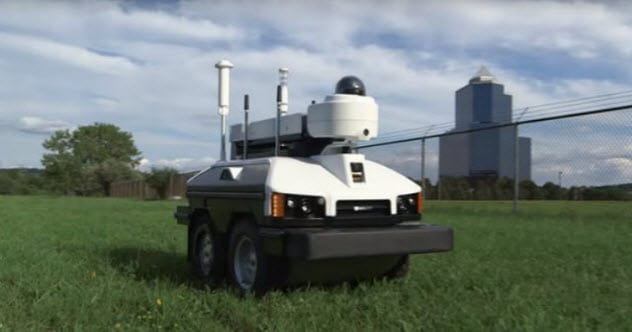
In recent years, there has been a movement toward using robot security patrols for outdoor marijuana crops. In California, the growers of Canndescent tested out this idea with the help of the company Sharp Intellos. They implemented automated unmanned ground vehicles (UGVs) to guard the perimeter in the evenings.
Todd Kleperis, chief executive officer of Hardcar Security, explained that robots are the most effective in this endeavor because humans are naturally flawed. He said, “At night, guards sleep, they play video games, and spend time on social media. It’s fraught with human error.”[3] Not to mention, the security detail must put their lives on the line every night.
So robots are the natural solution. Kleperis said, “If you’ve ever been shot at, it’s very scary. These robots can take a gunshot better than a human.” Robots do not return the gunfire but merely alert the humans when something is amiss. However, Kleperis mentioned that he is considering adding a pepper spray function in the future.
7 Armed Scarecrow
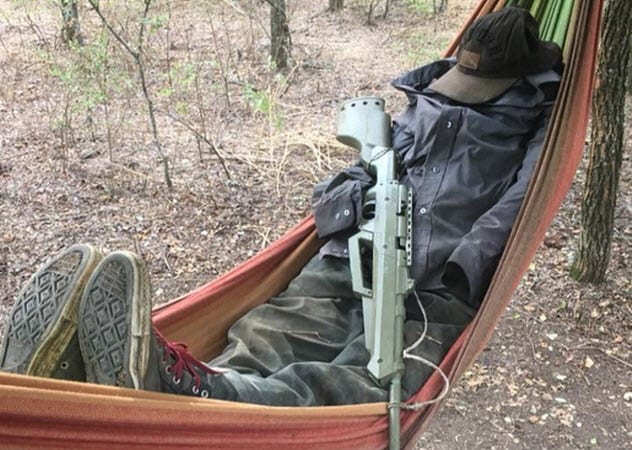
A sophisticated operation with campsites, water pumps, and 10,000 1.8-meter-high (6 ft) marijuana plants was discovered near Dallas, Texas. The 5-acre site, just outside a rest stop, was so well hidden that it was only discovered via an anonymous tip.
First, police approached the site with a drone. Then they needed a bulldozer to clear a path through the dense woods. When they arrived, the only guard in sight was a sinister scarecrow positioned in a hammock with a tilted hat over its face, boots on, and a fake rifle strapped across its chest.[4]
The presence of a gun makes it clear that the dummy was a deterrent, not for hungry crows but humans who have strayed too far from the rest stop.
6 Thin Black Screen

Sometimes, growers choose to hide in plain sight. In this case, nothing but a thin black veil whipping in the wind hid the illegal merchandise from an aerial view. Nothing else seemed to be needed as this operation was being conducted in the remote Mexican desert.
Army General Alfonso Duarte said that the black tarp is routinely used by farms to protect crops from the harsh Mexican sun. Due to this blind spot, Duarte explained, it was difficult to verify the type of crops being grown from the air. So soldiers had to travel to the isolated area on foot to be certain.
There, they discovered that the black screen hid a 300-acre plantation that produced approximately 120 tons of pot with an estimated value of $160 million. It was revealed to be one of the largest (if not the largest) marijuana plantations ever discovered in Mexico.[5]
5 Cornfields
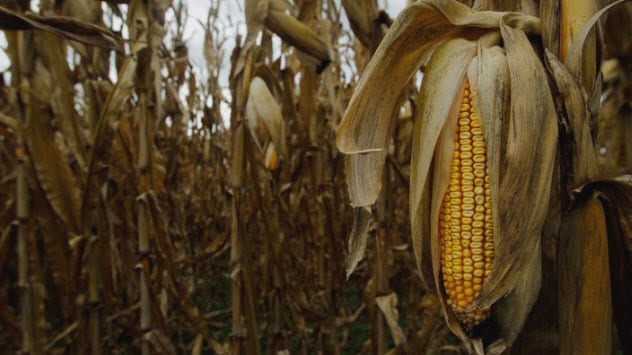
America leads the world in corn production, but many are unaware of the agricultural underworld that persists. If you take a stroll through a cornfield, you’re likely to come across a skunky whiff of a different sort of crop.
Cornfields are planted across hundreds of acres, sometimes thousands. Once the corn is planted, the farmer doesn’t set foot in the field again until harvest time. This is due to labor-saving technology and innovations. It’s very convenient for marijuana growers, who can easily hide their plants among the giant stalks of corn.
Cannabis grows faster than corn. It can be transplanted into a field after corn is planted and then grow to fruition before the corn is harvested. In the Corn Belt, farmers routinely find marijuana patches in their fields. There are entire Internet forums for pot growers to discuss the business of hiding their crops in cornfields.
Not only is there ample sunlight but the corn farmers ensure that the soil is rich and optimal growing conditions are met. Plus, marijuana growers plant a network of small patches throughout the cornfields using GPS technology, which makes it impossible to detect. The large industrial-style farming of corn has given birth to this green underbelly of criminal profit that is almost completely untraceable.[6]
4 Prison

In California’s Central Valley, there is a small red dot of a town called Coalinga. As you are driving into town, there’s a billboard with bold lettering that reads, “Jesus is Lord of Coalinga.” It’s a highly religious, Republican community that has voted against marijuana legalization every time it has appeared on the ballot.
The town was bankrupt, with $3 million in debt and high unemployment. Its only asset was an abandoned prison. They tried desperately to sell it, but nobody wanted the building until a strange, unexpected buyer came along: Ocean Grown Extracts. An investor in this medical marijuana company was Damian Marley, son of the reggae singer Bob Marley.
“This is symbolic and a big middle finger to the drug war and to a broken system that hasn’t worked for a long time now,” Marley’s manager said.[7] It’s fantastically ironic that a large marijuana growing operation would take place in a prison which had recently housed convicts for marijuana-related crimes.
3 National Parks
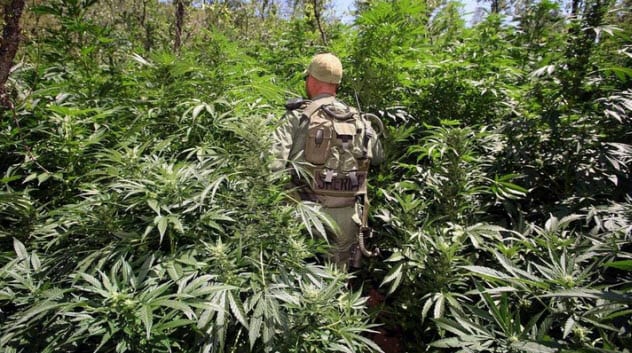
The Forest Service says that its law enforcement officers spend most of their time investigating illegal cannabis operations. California has over 16 million acres of national forest lands, and illegal grows have been found in 40 of its 58 counties. Massive marijuana grows have even been discovered in iconic national parks like Yosemite.
It’s incredibly dangerous when an unsuspecting visitor happens upon one of the aforementioned booby traps that are common. One may be joyfully hiking and twirling in the hills, Sound-of-Music style, only to trip a wire connected to a shotgun shell.
There’s also the use of pesticides, like carbofuran, that are so gross that they have been outlawed in California for more than a decade. Majestic elk and snowy owls consume these lethal poisons and fall dead on the spot. Not to mention the water pollution and trash heaps that the marijuana growers leave behind. Pot farmers are not marijuana-loving hippies that want to save the planet as is often romanticized.[8]
2 Slaves In A Nuclear Bunker
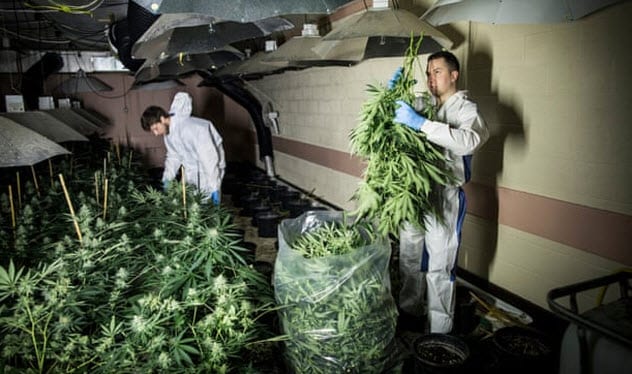
Three men were jailed for converting a former nuclear bunker into an industrial-sized pot farm in Wiltshire, England. They had been operating this site for at least five years. When it was discovered, there were nearly 5,000 plants safely guarded belowground.
Unfortunately, the police also found three Vietnamese men who had been locked behind a 13-centimeter (5 in) door that was strong enough to withstand a nuclear blast. None of them had a key to the door. The men, two of whom were teenagers, appeared utterly terrified.
Detective Inspector Paul Franklin said, “It was slavery, there’s no doubt. [ . . . ] They were trafficked from Vietnam, they were placed there and told to work.” None of the three men who were jailed faced charges of slavery, however. The victims wouldn’t talk to the cops. It’s likely that there were threats against their families back home.[9]
The next day, another young Vietnamese man was found wandering aimlessly outside a nearby rural village. Police suspect that he escaped by slicing open his metal ventilation tunnel on the roof.
1 Deadly Predators
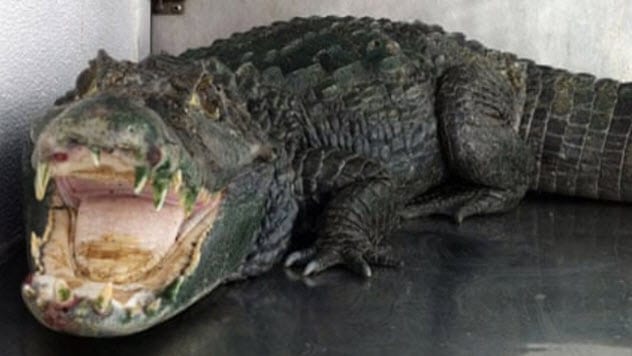
In folklore and myth, snakes are often guardians. The snake is the universal protector of sacred trees or, in the case of pot growers, the protector of expensive crops.
In Louisiana, a grower used a python to protect his 2.3 kilograms (5 lb) of weed. On a farm in Essex, England, a marijuana greenhouse had 24 snakes slithering in between the greenery. Two of those snakes were horned vipers, which are highly venomous.
In western Canada, police discovered 10 black bears on a pot plantation with 1,000 cannabis plants. The wild bears had been lured onto the property with dog food to guard the premises. It seems like an army of bears would be a clever intimidation tactic to ward off would-be thieves, but charging beasts with wild eyes and gnashing teeth were far from the reality of these docile creatures.
After the initial shock wore off, police quickly learned that the bears weren’t going to attack. A Royal Canadian Mounted Police sergeant said, “They were tame. They just sat around watching. At one point, one of the bears climbed onto the hood of a police car, sat there for a bit, and then jumped off.”[10]
Guard dogs also monitor pot plantations. In fact, they are so common that you can actually buy specially trained dogs for “cannabis protection” online now. Alligators as watchdogs, or “watchgators,” aren’t as common, but they aren’t just a one-time oddity, either. It’s a trend that’s seen from Pennsylvania and Maryland all the way across the country to California.
“Mr. Teeth” was one such gator. At 1.5 meters (5 ft) long, he was found patrolling a grower’s bedroom with 15 kilograms (34 lb) of pot. Another gator was the 25-kilogram (55 lb) Wally, who was discovered in a swimming pool in Hemet, California. Wally was guarding 2,200 plants that would have brought in approximately $1.5 million.
Read more harrowing stories about powerful drug lords on 10 Of The Richest And Most Powerful Female Crime Lords Ever and 10 More Richest And Most Powerful Drug Lords.








